During lonely hours, we sometimes replay long ago moments. The past only exists in the memories we have edited and cultivated. Nostalgia, with its cousins — ennui and romance — hang together. In our field of firearms, some seem to long for a simpler time.
Nostalgia is the suffering caused by an unappeased yearning to return.” – Milan Kundera
“What you end up remembering isn’t always the same as what you have witnessed.”
― Julian Barnes, The Sense of an Ending

Nostalgia and Firearms
A very few may remember pre ’68 GCA rules. Old guns offer a link to the past, and memories of carefree plinking and small game hunting. Sometimes, artifacts are strong in symbolism. However, nostalgia plays very little role in my firearms choice.
I don’t pine for those days… far from it. Been there; done that. No need to repeat it. As for the laws, no. Not all are good. But I grew up in a state where the Governor was basically a patsy for Jimmy Carter and managed to get some terrible laws passed that took us years to recover from. One handgun a month was one law.
There was no concealed carry permit, save for but a few well-heeled citizens. In the south, the segregationist’s buddy — if he had contributed enough — might pick up a permit. In the north, the mob had carry permits issued by fat, friendly judges. No, I don’t miss those days and the light thrown on this.
I began hunting with affordable .22 rifles. Most were utilitarian at best. The Ruger 10/22 rifle was far from common, and I could not afford one. The Bergaa rifle, not to mention the Springfield 2020, is a far better rifle than anything I dreamed of.
Nostalgia is, by definition, a longing for a past time or self. Not me. It was a long grind to obtain an education. The uneducated and educated differ as much as the living and the dead, and I do not wish to be that young boy again.

I would never have been anywhere without my grandmother. She graduated from the third grade and went to work in a cotton mill. She read constantly and read to me as a child. My grandfather taught me gun safety and marksmanship.
I have fond memories, sure. However, I don’t think about it a lot. I’m too busy. I am now in the position my grandfather enjoyed (after teaching my children and now the grandchildren).
It isn’t all about guns of course. My grandson Ryan is as comfortable with a 12-string guitar as I am a 1911. Sure, memories are good. I remember walking into a copse of trees behind my home and crying the day Janice Joplin died. But that was a long time ago, and this is a gun story.

Guns of the Past
I have, only occasionally, written about the great guns of the past. Most of the ‘guns of the day’ from long ago, I eventually owned or test fired. I have a Smith & Wesson Kit Gun .22 as well as a Smith & Wesson Combat Masterpiece .22. I was privileged to fire a four-inch barrel Smith & Wesson .22 during my time earning a Criminal Justice degree.
Nostalgia doesn’t really enter in this choice. The old Smith is simply the best revolver of its type ever made. There are no MIM parts, and the action is very smooth. No ridiculous Hillary Hole lock. (They do fail~) These old guns are not safe queens. I fire them often.
For serious sub-caliber training with modern carry guns, the FN 502 is a far more appropriate choice. It’s as accurate as the old Smith. The Kel-Tec K17 is lighter than the Kit Gun, holds 17 rounds, and is very reliable and easy to shoot well. Why would I want an older gun over these modern wonders?

I have spent a great deal of my shooting life immersed in the 1911. I owned quite a few old Government Model 1911 pistols. I eventually owned a new Colt Series 70. It was OK, but not really a great improvement over GI guns. The collet bushing broke sometimes and the sights promoted eye strain.
Then, Colt introduced the Series 80. A great gun for the time with many improvements — including good feed reliability and larger sights. There was also a stainless steel version. In my opinion, for serious use, the modern Colt pistols seriously outclassed anything before 1980. They have steadily improved since.
I cannot imagine pining after a pistol with a heavy trigger action and embryonic sights. I have not considered an older 1911 for personal defense or duty. However, I always purchased — and used — the best, most modern 1911 I could afford. Firing an older 1911 isn’t exactly cathartic. It is reminiscent of a time when I was limited by my handguns.
In other types… sure, older Colt and Ruger revolvers were good very good. But there are many modern models to choose from today. They are made of good steel and perform well.
There is plenty of ironmongery today, but probably nothing as truly bad as some of the older guns. There have always been more cheap guns than good guns. I am not nostalgic for the guns that fleeced unsophisticated buyers.

Argue if you will, or simply consult the well documented H P White lab tests. The old Llama and Star pistols did not fare well. I think today’s affordable guns are way ahead of anything we had in the day. Our best guns are also better than the best of the past.
There may be those who bemoan the rising cost of quality firearms. I don’t know about that. There are many good quality, affordable firearms that serve quite well. And I am not certain that the guns of the past were any more affordable than the guns today. As an example, when I first entered police work my choices included a Smith & Wesson Military & Police .38 at $98, Colt Official Police at $129 (Colt lost the police market), Smith & Wesson Combat Masterpiece .38 at $138, or Python at $275.
A Colt Commander .45 was $149.95. Gee, don’t we wish we had those prices back. I also remember my paychecks. A working cop made $249 every two weeks. I took a promotion to Patrol Lieutenant a few years later — in a smaller city with a pay cut. I asked for a raise and got it. Later, we learned that my raise came via a cut to everyone’s Christmas bonus.

No, I am not nostalgic for old prices and pay. I prefer today’s real buying power. By the time I was receiving education pay, I was pretty much resigned to the pay and worked two to three jobs.
I should say something about those old police revolvers. We qualified at 7 to 50 yards and some of the officers were very good shots. They would not be helpless against rifle fire. Maybe we had something.
A Few Words on Qualification
We fired 60 rounds. We began with 12 rounds, single or double action, at 50 yards, and proceeded to 15, 12, 10, and 7 yards, firing and reloading, moving down the line from the longest distance. Seven-yard firing was done with one hand. The 50-yard section was fired from a barricade.

Depending on how fast you were able to fire and qualify, it wasn’t unusual to be at 12 yards while a fellow to your right or left was firing at 25 or 15. He was about a shoulder’s width to one side of you. I did not exactly hear the bullets whistle by, but it put a bit of pressure on safety. I don’t miss that at all. I prefer the training I use today, and I prefer firing on my own or separated by barriers.
I don’t miss the wound unreliability of the .38 Special in any number of shootings. Once we had the FBI load, (nationwide) things changed. There was never any question of the effectiveness of the .357 Mangum.
The 9mm automatic was represented by the Smith & Wesson 39. The 39-2 fed hollow points and was accurate. The high-capacity Model 59 had a grip angle that made you long for angle iron. The Model 59 made cops work for 25-yard qualifications and was hopeless at 50 yards, so 50-yard qualification was ended.

Then came the superb SIG P226 and Beretta 92 — excellent guns. (My ragged old notebook confirms the SIG would put five Federal 9mm 9B into 1.5 to 2.4 inches at 25 yards. The Beretta was not far behind. The M59 on a good day might do an 8-inch group.) Today’s variants of the SIG and Beretta are better. Smith & Wesson’s next generation was still based on a 1950’s trigger action. The Colt 2000 was so bad that it elicited surprise.
I don’t miss the ammunition of those days. Modern ammunition, such as the Federal HST, Hornady XTP, and Speer Gold Dot, is leagues ahead. Most of the guns of the day that chocked on Super Vel and Speer Flying Ashtray feed well with modern loads. Allen Jones and his crew at Speer perfected feed reliability in the Gold Dot bullet. If you wanted quality and effectiveness, handloads were once the ticket.
Final Thoughts
So far, I am not feeling nostalgia but relief for what we have today. Then came the Glock. Very few recognized the benefits of the Glock. Reliability was unquestioned. Ease of training, with only one trigger action to learn, eventually outpaced the popularity of double-action first-shot guns.

I don’t miss the first generation Glock pistols that I modified with sights and barrels. The present guns are much better, and of course, we have the Walther PDP. I still own a number good 1911 handguns. I can purchase a good Colt Competition — one of the most accurate factory pistols in my experience — or a Springfield TRP for less than I once spent to upgrade a factory 1911.
I still enjoy firing the Novak custom 1911, but for constant carry, it is a Springfield Loaded. Despite my respect for the great revolvers of the past, look at the Smith & Wesson 640 Pro… night sights, fluted barrel, and a smooth action. Not to mention ergonomically-designed grips separating the hand from the frame and providing excellent recoil control. Nothing like that in the old days.
The rise of America’s rifle in the hunting field has given us the incredibly accurate and useful AR-15 rifles. Modern optics are amazing — more advanced than most computers of a generation ago — with excellent performance, if you are willing to pay for it. Affordable optics are better than ever. If you want to pine about the old days of music, some of the best are still with us. As far as firearms we are living in an age with the best.
Which side of the ‘nostalgia’ fence do you sit on? Do you prefer the older guns or those with more modern features and designs? Make your case in the Comment section.

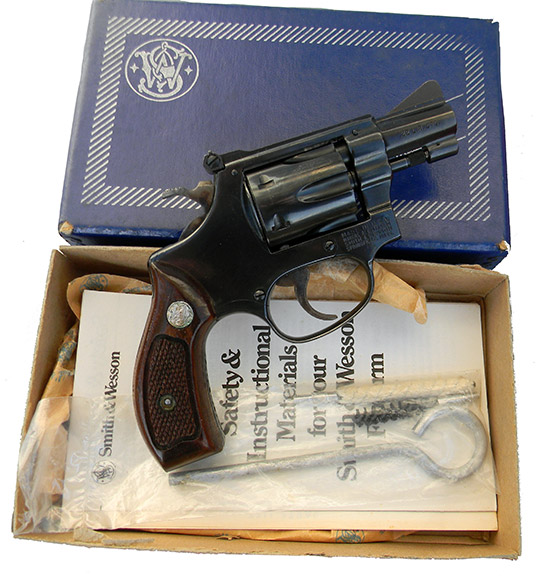
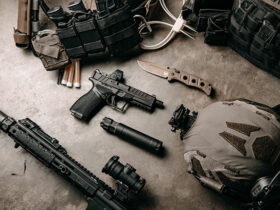

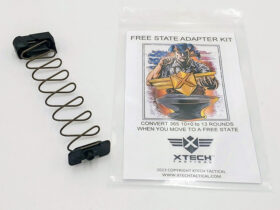
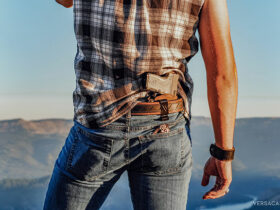
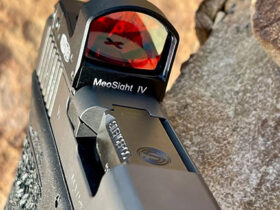
Leave a Reply